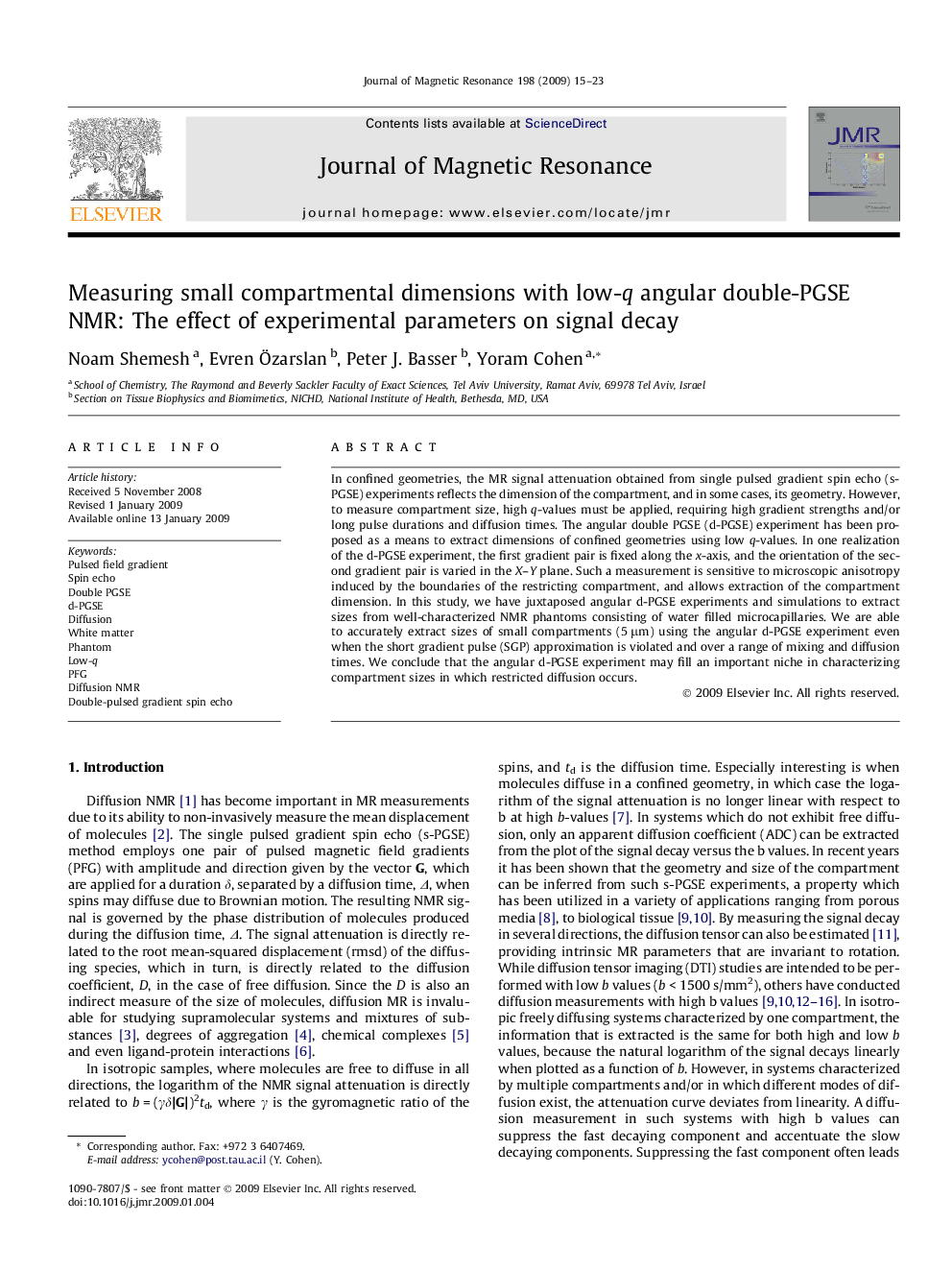| Article ID | Journal | Published Year | Pages | File Type |
|---|---|---|---|---|
| 5406976 | Journal of Magnetic Resonance | 2009 | 9 Pages |
Abstract
In confined geometries, the MR signal attenuation obtained from single pulsed gradient spin echo (s-PGSE) experiments reflects the dimension of the compartment, and in some cases, its geometry. However, to measure compartment size, high q-values must be applied, requiring high gradient strengths and/or long pulse durations and diffusion times. The angular double PGSE (d-PGSE) experiment has been proposed as a means to extract dimensions of confined geometries using low q-values. In one realization of the d-PGSE experiment, the first gradient pair is fixed along the x-axis, and the orientation of the second gradient pair is varied in the X-Y plane. Such a measurement is sensitive to microscopic anisotropy induced by the boundaries of the restricting compartment, and allows extraction of the compartment dimension. In this study, we have juxtaposed angular d-PGSE experiments and simulations to extract sizes from well-characterized NMR phantoms consisting of water filled microcapillaries. We are able to accurately extract sizes of small compartments (5 μm) using the angular d-PGSE experiment even when the short gradient pulse (SGP) approximation is violated and over a range of mixing and diffusion times. We conclude that the angular d-PGSE experiment may fill an important niche in characterizing compartment sizes in which restricted diffusion occurs.
Related Topics
Physical Sciences and Engineering
Chemistry
Physical and Theoretical Chemistry
Authors
Noam Shemesh, Evren Ãzarslan, Peter J. Basser, Yoram Cohen,
